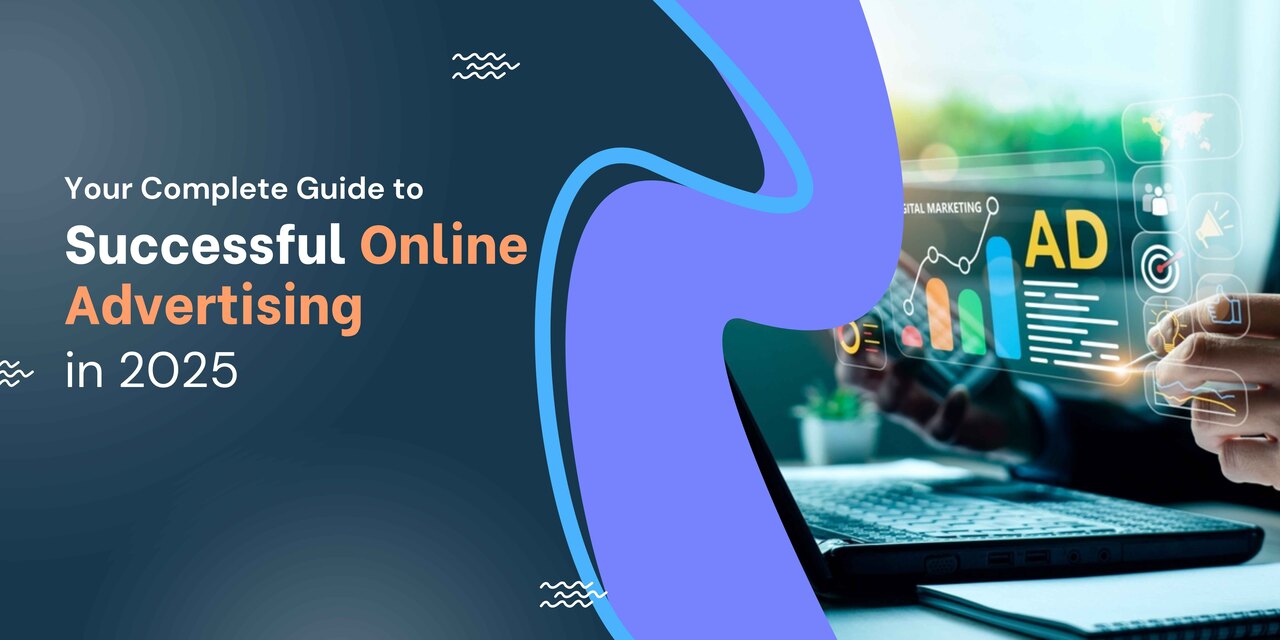Online advertising has become an essential tool for businesses to reach their target audience effectively. In 2025, it continues to evolve with new trends and strategies that enhance brand visibility and engagement. Whether you’re a small business or a large corporation, understanding online advertising is crucial to staying competitive in the digital marketplace.
What is Online Advertising?
Online advertising is a digital marketing strategy that involves promoting products or services through the internet using various platforms and channels. It enables businesses to reach their target audience efficiently by leveraging tools such as search engines, social media platforms, websites, and email campaigns. Online advertising allows businesses to create personalized, data-driven campaigns that can increase brand visibility, generate leads, and drive sales.
With advanced targeting options, businesses can tailor their ads based on user demographics, interests, behaviors, and geographic locations. Popular forms of online advertising include search engine ads, social media ads, display ads, video ads, and influencer marketing. By utilizing online advertising, businesses can track performance in real time, optimize their strategies, and achieve a higher return on investment (ROI).
Most Effective Forms of Online Advertising
To achieve the best results, businesses should focus on the most effective forms of online advertising, which include:
- Search Engine Advertising:
- Appears on search engine results pages (SERPs) when users search for related keywords.
- Google Ads and Microsoft Ads offer robust targeting and performance tracking options.
- High intent targeting, meaning users are already searching for related products or services.
- Social Media Advertising:
- Platforms like Facebook, Instagram, LinkedIn, and Twitter allow businesses to connect with a vast audience.
- Advanced targeting based on demographics, interests, and behaviors.
- Engaging ad formats such as image ads, carousel ads, and video ads.
- Video Advertising:
- Video content on platforms like YouTube, TikTok, and social media drives high engagement.
- Effective for storytelling and conveying messages in an engaging way.
- Ideal for brand awareness and customer education.
- Display Advertising:
- Banners, images, and interactive media placed on various websites.
- Helps increase brand exposure and retarget users who have visited your site.
- Often used in conjunction with retargeting strategies.
- Influencer Marketing:
- Collaborating with influencers who have a loyal audience.
- Builds credibility and trust with potential customers.
- Particularly effective in industries like fashion, beauty, and lifestyle.
- Native Advertising:
- Ads that match the form and function of the platform they appear on.
- Enhances user experience and reduces ad fatigue.
- Often used in content marketing strategies.
- Email Marketing:
- Directly reaching out to potential customers with personalized messages.
- High ROI with minimal investment.
- Helps nurture leads and build long-term relationships.
Types of Online Advertising
Integrating different advertising channels into your online marketing strategy is a great practice when aiming for growth. An omnichannel campaign influences customers across different platforms and increases your marketing ROI. Here are the six most popular channels you should add to your strategy:
- Email Marketing
- Personalized communication sent directly to inboxes.
- Lower costs compared to traditional methods.
- Detailed analytics for tracking campaign effectiveness.
- Display Advertising
- Targets a broad audience across various websites and platforms.
- Uses eye-catching graphics and multimedia for engaging ads.
- Allows precise targeting based on demographics, interests, and behaviors.
- Search Engine Marketing (SEM)
- Reaches users actively searching for specific keywords.
- Can drive traffic and conversions quickly.
- Provides detailed analytics for tracking performance and ROI.
- Native Advertising
- Blends in with the surrounding content, making it less intrusive to users.
- Often generates higher engagement rates due to its non-disruptive nature.
- Builds trust with audiences by providing valuable content alongside promotions.
- Social Media Advertising
- Allows targeting based on demographics, interests, and behaviors.
- Provides interactive ad formats such as likes, comments, and shares.
- Offers detailed analytics for measuring campaign effectiveness.
- Content Marketing
- Provides valuable and informative content that establishes credibility.
- Generates long-term organic traffic and brand awareness.
- Can be repurposed across various channels to maximize reach and impact.
Benefits of Online Advertising
- Cost-Effective: Online advertising offers various budget options suitable for businesses of all sizes.
- Targeted Reach: Advanced targeting options allow businesses to reach specific audiences based on location, behavior, and interests.
- Measurable Results: Tools like Google Analytics provide insights into ad performance, including impressions, clicks, and conversions.
- Increased Brand Awareness: Regular exposure through digital advertising increases recognition and credibility.
- Flexibility: Campaigns can be adjusted in real-time based on performance.
How to Create an Effective Online Advertising Campaign
- Define Your Goals: Determine whether you aim to increase sales, generate leads, or boost brand awareness.
- Identify Your Target Audience: Understand your audience’s demographics, interests, and online behaviors.
- Choose the Right Platforms: Select platforms that align with your audience’s preferences.
- Craft Compelling Ad Content: Use clear messaging, high-quality visuals, and a strong call-to-action (CTA).
- Set a Budget: Allocate your budget wisely to maximize ROI.
- Monitor and Optimize: Regularly analyze campaign performance and make necessary adjustments.
Cost of Online Advertising
The cost of online advertising varies based on factors such as platform, targeting options, and competition. Here are some common pricing models:
- Cost-Per-Click (CPC): You pay for each click your ad receives.
- Cost-Per-Impression (CPM): You pay for every 1,000 impressions your ad generates.
- Cost-Per-Action (CPA): You pay when a user takes a specific action, such as making a purchase.
Best Online Advertising Strategies for 2025
- Leverage Artificial Intelligence (AI): AI tools can optimize targeting and ad placements.
- Personalized Advertising: Use data to create personalized experiences for users.
- Omnichannel Approach: Combine multiple platforms for a unified advertising strategy.
- Retargeting: Engage users who have previously interacted with your brand.
- Content Marketing Integration: Combine ads with valuable content to build trust and authority.
Future Trends in Online Advertising
- Voice Search Optimization: As voice assistants grow in popularity, optimizing for voice search is crucial.
- Augmented Reality (AR) Ads: Interactive experiences will enhance user engagement.
- Privacy Regulations: Advertisers need to comply with evolving data protection laws.
Conclusion
Online advertising is a dynamic and essential aspect of modern business marketing. By understanding its types, benefits, and strategies, businesses can create successful campaigns that drive growth and engagement. Staying updated with the latest trends will help in maximizing the effectiveness of online advertising efforts in 2025.
RSXigital – Premier Digital Marketing Agency: Whether you’re looking to launch a new campaign, optimize your existing efforts, or explore innovative strategies, RSXigital is your trusted partner in navigating the digital landscape and achieving exceptional results.


